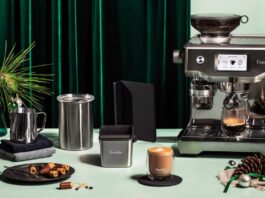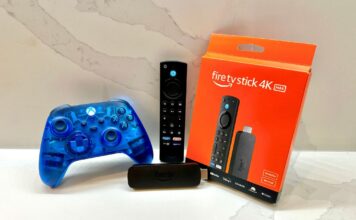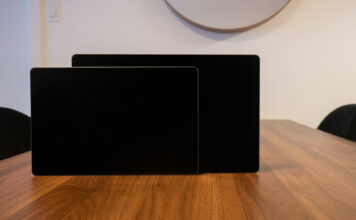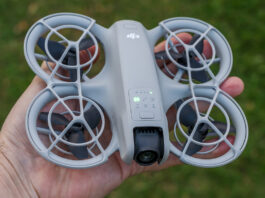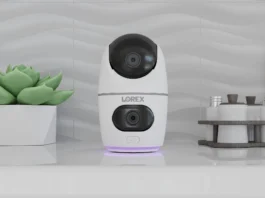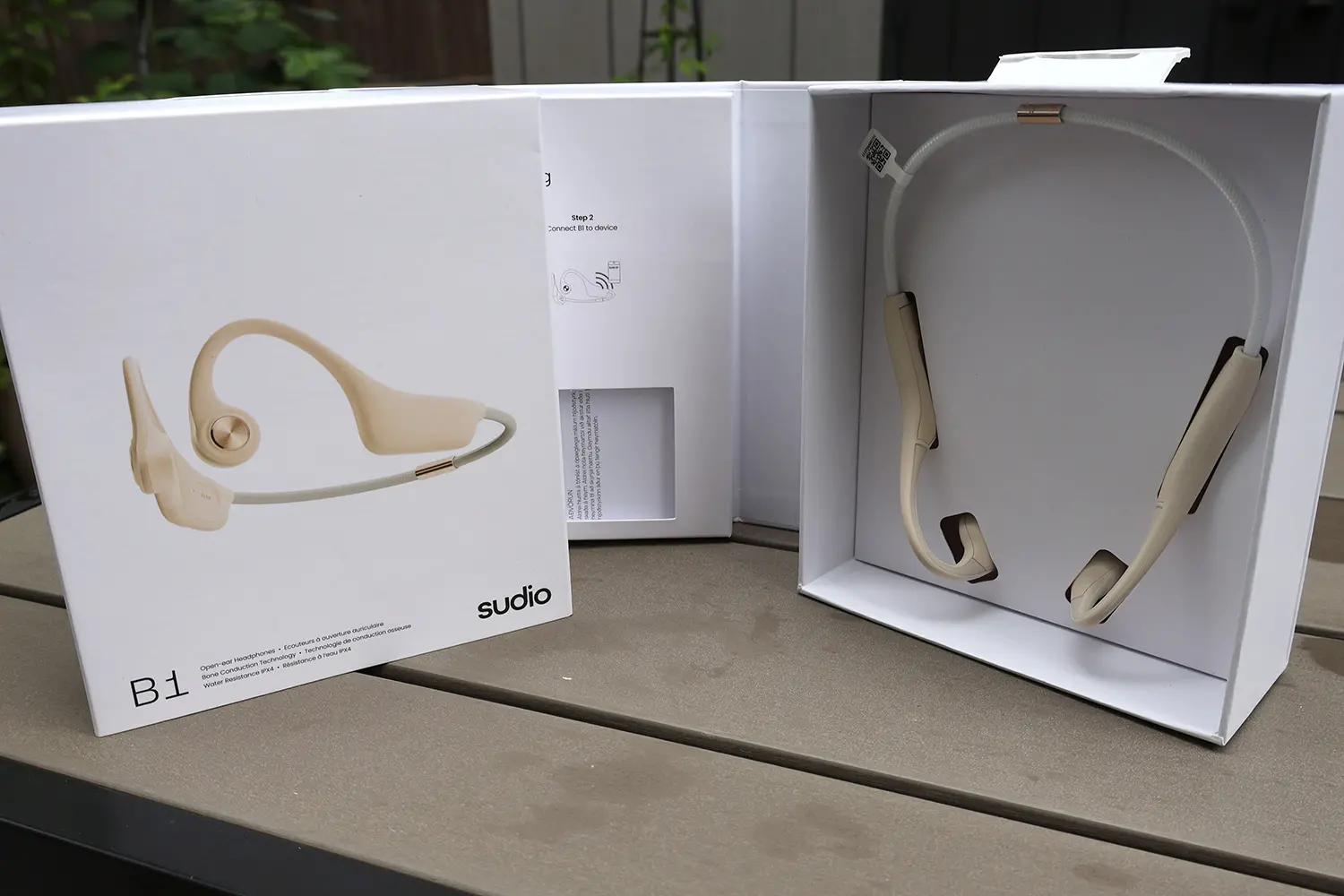
The Sudio B1 bone conduction headphones give you an ideal balance of listening to music while still being aware of your surroundings. Whether you’re a runner who wants to be cognizant of traffic noise, or a parent that wants to take a moment to listen to music while still waiting for the inevitable cry from the other room, bone conduction headphones provide sound while keeping your ears open. In real world use they feel a bit strange, but the end result may be exactly what you’re looking for. Let’s take a look at what the Sudio B1 bone conduction headphones can contribute to your portable audio arsenal.
Sudio B1 bone conduction headphones specs
- Driver: 10mm bone conduction transducer
- Colors: Black, White
- 2 microphones per side
- Weight: 35.2g
- Up to 6 hours playtime
- IPX4 water resistance
- Bluetooth version 5.2, SBC codec
Unboxing the Sudio B1 bone conduction headphones
Sudio packages their products in sustainable materials, where even the tape that keeps the boxes sealed is made out of paper. Once you slide out the box-within-a-box, you open it up book-like, with the headphones themselves nestled on the right-hand side, and the documentation and charging cable in separate sections on the left.
It becomes immediately obvious that the B1s behave a bit different than other products in the Sudio line, as the charging cable has a USB-A connector on one end, and a small, pill-shaped connector on the other. Small metal pins are there to transmit power, and two tiny round magnets help affix it on the side of the headphones.
The cable attachment does take a bit of getting used to, and while it’s helpful that lights illuminate to show proper charging, the very shallow indent on the headphone side means that even a small jostle will disconnect the cable. Furthermore, this is of course a proprietary charging solution, meaning you best be keeping it safe. You’ll also have to travel with a USB-A charger for when you need to juice up and continue to listen. Luckily the battery life on this model is more than ample for most use case scenarios, so placing it on a table top and letting it recharge undisturbed won’t be an issue for every day use.

How do the Sudio B1 bone conduction headphones work?
Just about every headphone or earphone on the market moves air about, the drivers within creating differences in pressure that are translated by the mechanism within your eardrum to register these in-and-out movements as sound. As bone conduction headphones the B1 headphones don’t push air about, but they knock out the proverbial middle person with the transducers (think “speakers”, but for headphones) placed on the side of your face. The result to the touch is a gentle vibrating sensation, but to your ears you get clear sound at reasonable volume, all while having your regular hearing completely unobstructed.
Controlling the Sudio B1 headphones
Each headphone model has its own idiosyncratic way of using gestures to control various aspects of the headphone, and the Sudio B1 is no exception. Rather than a touch sensitive surface like other earphones, there’s a gold-coloured button at the tips of each side. Pressing inward provides quite satisfying haptic feedback, and thanks to their placement you’re not accidentally hitting pause when you jiggle an earbud, or initiating the voice assistant when your hair accidentally brushes to the side of your headphones.
According to the documentation included, these are the functions that you get when pressing the buttons:
- Press once on either button (left or right) to play or pause
- Press twice on the left button to rewind
- Press twice on the right button to go forward
- Press three times on the left button to decrease volume
- Press three times on the right button to increase volume
- Press (hold) for two seconds on left button to talk to the voice assistant.
- Press (hold) for two seconds on left button to exit the voice assistant
The controls are speedy, and thanks to the excellent button construction you’re basically set once you learn the quite straightforward process allowing you to keep your mobile device tucked away.

Sudio B1 bone conduction headphones sound quality
If you’ve never had a chance to try out a pair of true bone conduction headphones, the initial session may be a little strange. With your ears fully open to the elements, the band wraps around your head, the hooks wrapping over your ears, and the transducers and button section nestling at just in front of your ears, touching your temples. When you play a song, particularly one with a fair amount of stereo separation, the first result is almost unnerving, as you’re hearing the music within you in a way not often experienced. Those around you may hear a small amount of rattling, but for the most part it’s a fine way to listen to tracks without your neighbours sharing in your song selection. The band itself isn’t adjustable, but its springy construction means they fit just about any head shape with ease.
The sound itself is different than just about any earphone you may have listened to. While it doesn’t exactly challenge more purist models, you still get quite the frequency sweep from pretty decent bass, a clear midrange and some OK treble. The sound feels a bit hollow and echo-y, but that’s in part because you’re hearing environmental noise without restriction when listening. If you go into a totally quiet room things improve in terms of sound quality quite a bit without the competing noise, and as a fun experiment I even tried them with earplugs, finding that not only did the bass increase tremendously, but in noisy environments like travel, this might prove to be an excellent way of using passive noise cancellation while the music still buzzes into your ear canal.
For podcasts or casual listening these headphones are more than satisfactory, and its basic feature of keeping your ears able to hear external noises mean they are a boon for anyone engaged in outdoor activity. They’re even beneficial for those that have some particular hearing impairments, where while traditional headphones may not be of benefit, this mode of sound transmission may in fact be perceptible. If there’s even one person for whom these headphones can open up a world of music they’re worth their weight in gold. If you want completely immersive sound the B1 bone conduction headphones may not be for you, as the entire point is to keep you actively engaged in the outside world which is counterproductive to “losing oneself” in the sound. Still, music playback is engaging, from rock to pop to jazz to even classical orchestral pieces, and even after many hours of listening I didn’t tire of the side-of-head sensations that were transmitting the tunes.
Final thoughts
There’s something that’s future friendly about the Sudio B1 bone conduction headphones, where it’s all about literally feeling the music rather than hearing it in the way we traditionally think. While the sound signature takes some getting used to, for most people the advantages of having complete awareness of the noises around far outweigh any concerns about accurate bass reproduction or how the transients of a particular track are experienced. The sound may be secondary to the form factor, but that’s not to say they don’t provide a satisfactory experience when listening to music or spoken word.
For those able, these would be the ideal model as a second pair, used when needing to have the world still seep in while listening. As a technology bone conduction is quite impressive indeed, and the Sudio engineers have implemented it in this model well, save for a few quibbles on things like the need for a proprietary cable. The Sudio B1 bone conduction headphones are easily recommended for those on a hunt for a new way of listening.




